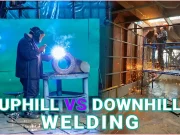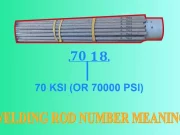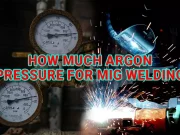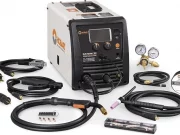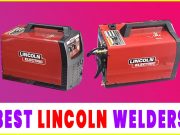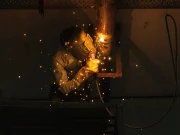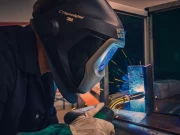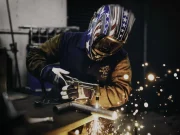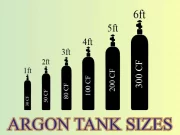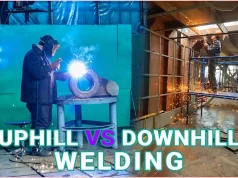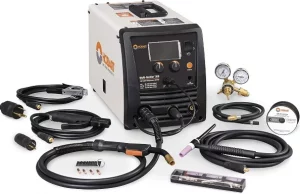If you don’t know the pros and cons of welding, you will probably not value the procedure much. Welding is the use of a heated surface to join metal parts together. It involves melting with a blowpipe and using an electric arc to join different pieces of metal together through hammering and pressing. You can use it in diverse ways to create an entirely new product or repair broken parts of materials.
What Are The Pros Of Welding?
There are different types of welding, and each type comes with its specific advantage. The common types of welding are; coated electrode weld, continuous wire welding techniques, and TIG welding.
What Are The Pros And Cons Of Coated Electrode Weld?
The use of the electrode typically characterizes coated electrode welds as filler material. It remains the most typical type of welding, and it is pretty simple in operations.
The low cost of setting up and operating it is its main advantage. The instrumentation is also portable; hence it is pretty easy to move around. This option is excellent for welding under difficult positions like during scaffolding.
One of the disadvantages of coated electrode weld is that it requires some experience to learn and operate. An electric arc can also pierce the thinner plates, and there is an impossibility of re-soldering the metal material to correct an error. When left in damp places, electrodes used in these types of welding will create a fragile coating which can increase the risk of breakage.
Another advantage of this type of welding is that it can be performed on thick materials. There is also no need to use a wire feeder or any piece of other equipment like a gas cylinder.
One benefit of this welding option is that it is one of the viable options for outdoor welding. Since gas welding is not advisable for outdoor welding, this option can be your ideal option under strong wind conditions.
Though it is easier to learn the coated electrode welding than options like TIG, you still need some skills and continuous practice to master this type of welding.
Another advantage of this welding option is that it can be performed on unclean surface materials. This procedure is one arrangement that means it can be performed on metal surfaces with rust or mill scale, and you will still achieve the best results.
One disadvantage is that this type of welding will require more extraordinary skill since the electrode must be held at a certain distance from welded material. This welding option can also generate lots of splatter and slag, making the procedure harder.
The need to clean up generated slag will reduce your efficiency, hence the total time to complete major projects.
The Pros And Cons Of Continuous Wire Welding Techniques
The continuous wire welding techniques are also known as MAG and MIG. These types of welding rely on the use of gas welding materials for metal processing. Right now, continuous wire welding techniques are the most economical types of welding. The economic benefits of MIG and MAG are based on the low cost of the welding materials used.
One of the pros of the continuous wire welding option is that less experienced welders can use it.
One of the main disadvantages of continuous wire welding is that it is pretty bulky and will require more energy to transport from one place to another.
MIG welding, in particular, is regarded as a semi-automatic welding type that is often used with steel. It involves the use of a consumable wire electrode plus a gas fed through a welding gun. The contact edge tip of the welding gun passes the electrical energy to the welding wire that generates the weld.
With a bit of practice, you can start using MIG weld efficiently, which is one of its advantages. It can also be used to successfully weld materials that are thinner in size. The wastage of materials here is much lower since this welding type can easily weld more delicate materials.
It provides uninterrupted welding; hence you can weld as many materials as possible within a limited time frame.
MIG welds have a disadvantage, and that is they leave rusty deposits on the material welded, which could create rust. The MIG welding process releases heavy smoke; this is quite detrimental to the environment, especially the welder.
Another disadvantage of MIG welding is that it cannot weld through dirty materials; hence you need to clean the material thoroughly before welding. The complex equipment used for this welding option can make it challenging to handle in the long run.
The Pros And Cons Of TIG Welding
The TIG welding option relies on the Use of Tungsten electrodes for welding. The welding process is protected by inert gas; hence, it is unnecessary to use filler material during the procedure.
TIG welding option is used chiefly of metals that are of reduced thickness. One advantage of this welding method is that it provides a final product of high resistance against future breakages.
The main disadvantage of TIG welding is that it is pretty expensive. No matter how excellent the final work quality is, this option of welding comes with costly materials and procure. Another disadvantage of TIG welding is that it requires expert knowledge of the setup and operations to operate.
MIG welding is usually the easiest welding option, especially for beginners. It is also suitable for many auto part repairs and home projects. It can successfully join low-allow metals. MIG welding offers a very low cleanup, unlike some other welding options that create lots of slags.
You can get an excellent MIG welding machine for less than $500, which is another advantage. This cost should be great for home users and small business owners. Since MIG is a simple welding device for hobbyists, it is straightforward to learn and installed. Ou can set it up within few minutes and start welding.
You need to pay attention to the wire sizes when using MIG or any other similar welding machine. Thicker wires will be more appropriate for thicker metals. For the best quality welds, you may want to use thinner wires. The 0.23” wire, for instance, may be most suitable for 16 to 24 gauge metals, while the 0.3” thick wires can be most appropriate for the 1/8” thick wires.
Welding Tips And Ideas For Beginner Welders
Some essential procedures can make one before more effective in welding. The safety of equipment, for instance, is necessary. You must prioritize your safety by wearing gloves, a safety helmet, and other gears that will protect your body from harm. You must always refer to the equipment manual if unsure of how a device operates.
Proper ventilation is essential when you weld in enclosed spaces. Make use of exhaust to draw out fumes from your area.
Using a multi-purpose welding machine is much better than using a particular type because it helps you learn faster, and you will complete jobs on a more economical scale. Make use of a ground clamp with your welding machine to secure your welded material in place.
It is essential to choose the right electrode when using the coated electrode welding option. There are many electrode options in the market, but choose the one most suitable for your project. Common types of electrodes you will see in the market include; 7018, 7024, 6012, 6013, and 6010. The first two numbers always represent the tensile strength of the electrode; for instance, “70” means the tensile strength of the electrode is 70,000PSI. It would be best if you used higher tensile strength for thicker welded materials.
The third digit after the first two indicates the position where the welding electrode must be applied. If the third digit indicates “2,” it means you should use the electrode in a flat position. The fourth digit indicates the current that must be applied to the electrode and the type of electrode coding.
Once you have set up your welding device according to the manual, you may begin your welding. Check once again that your settings are correct; you may want to create a butt weld using a thick material, for instance, a 3/16” thickness.
Practice very well on scrap metal pieces before you start welding professionally. Keep practicing until you are comfortable and very confident in what you do.
Conclusion
Some welding options may look more straightforward than others, but you need to choose all welding materials carefully to achieve the best results. For instance, for gas welding options, you may want to select carbon dioxide gas above argon and others because it is cheaper, but you need to keep in mind that some gases may finish more quickly than others, thus costing you more in the long run. Pay attention to all settings, operational and safety rules included in the manual to ensure optimal welding results and safety.



